The Stefan Batory Foundation is an independent Polish non-government organization established by American financier and philanthropist, George Soros, along with a group of Polish opposition leaders of 1980s, and registered in Poland since May 1988. It is named after Stephen Báthory, the 16th-century Polish king. The foundation's mission is to support the development of an open, democratic society in Poland along with other Central and East European countries.

Stanisław II August, known also by his regnal Latin name Stanislaus II Augustus, and as Stanisław August Poniatowski, was King of Poland and Grand Duke of Lithuania from 1764 to 1795, and the last monarch of the Polish–Lithuanian Commonwealth.
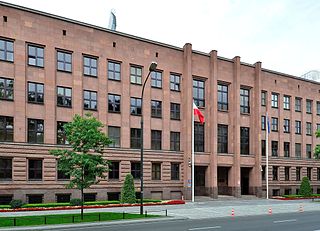
The Ministry of Foreign Affairs is the Polish government department tasked with maintaining Poland's international relations and coordinating its participation in international and regional supra-national political organisations such as the European Union and United Nations. The head of the ministry holds a place in the Council of Ministers.

SGH Warsaw School of Economics is the oldest and most prestigious business school in Poland.
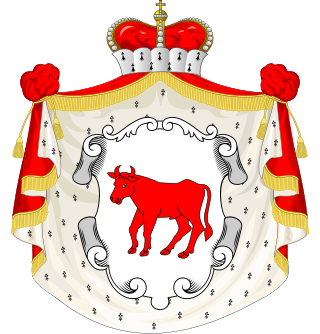
The House of Poniatowski is a prominent Polish family that was part of the nobility of Poland. A member of this family, Stanisław Poniatowski, was elected as King of Poland and reigned from 1764 until his abdication in 1795. Since Polish adjectives have different forms for the genders, Poniatowska is the equivalent name for a female member of this family.

Count Andrzej Hieronim Franciszek Zamoyski was a Polish noble (szlachcic). Knight of the Order of the White Eagle, awarded on 3 August 1758 in Warsaw.

The House of Zamoyski is the name of an important Polish noble (szlachta) family, which used the Jelita coat of arms. It is the Polish term for "de Zamość", the name they originally held as lords of Zamość. The family was influential in Polish politics for several centuries, and its members held various official titles, including those of Count and Countess.

The House of Lubomirski is a Polish princely family. The Lubomirski family's coat of arms is the Drużyna coat of arms, which is similar to the Szreniawa coat of arms but without a cross.
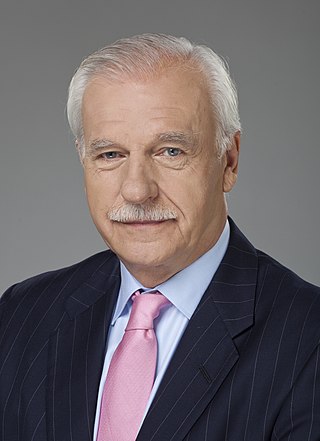
Andrzej Marian Olechowski is a Polish politician. He was one of the co-founders of liberal conservative party Civic Platform in 2001 with Maciej Płażyński and Donald Tusk. He served as Minister of Finance (1992) in the Jan Olszewski's Government and Minister of Foreign Affairs (1993–1995) in the Waldemar Pawlak's Government.
The ideas of the Age of Enlightenment in Poland were developed later than in Western Europe, as the Polish bourgeoisie was weaker, and szlachta (nobility) culture (Sarmatism) together with the Polish–Lithuanian Commonwealth political system were in deep crisis. The period of Polish Enlightenment began in the 1730s–40s, peaked in the reign of Poland's king, Stanisław August Poniatowski, went into decline with the Third Partition of Poland (1795) – a national tragedy inspiring a short period of sentimental writing – and ended in 1822, replaced by Romanticism.
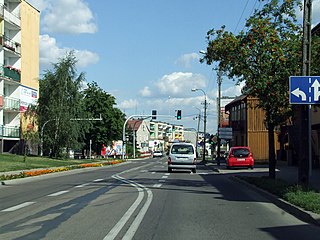
Żuromin is a town in north-central Poland, in Masovian Voivodeship, about 120 kilometres northwest of Warsaw. It is the capital of Żuromin County.

Stanisław Leopold Kronenberg, was a Polish financier.
The Chopin University of Music is a musical conservatorium and academy located in central Warsaw, Poland. It is the oldest and largest music school in Poland, and one of the largest in Europe.

The Warsaw Lyceum was a secondary school that existed in Warsaw, under the Kingdom of Prussia and under the Kingdom of Poland, from 1804 to its closing in 1831 by Imperial Russia following the Polish November 1830 Uprising.
The "Whites" were a faction among Polish insurrectionists before and during the January Uprising in early 1860s. They consisted mostly of progressive-minded landowners and industrialists, the middle class, and some intellectuals of Russian controlled Congress Poland. The faction had its origins in the Towarzystwo Rolnicze started by Count Andrzej Artur Zamoyski in 1858. While the Whites supported ending serfdom, unlike the "Red" faction, they advocated for some kind of compensation to be made to the landlords. Also unlike the Reds, the Whites generally opposed the idea of an armed insurrection against Russia, seeing it as doomed to failure. Instead, they tried to use diplomacy and the support of other European powers to win greater autonomy, a separate administration, and a native Polish army for Congress Poland. They also tried to influence the Tsar to engage in the recovery of former Polish lands, which had been taken by partitioning powers Austria and Prussia. However, once the January Uprising broke out, most Whites supported it both politically and militarily.

The Constitution of 3 May 1791 is an 1891 Romantic oil painting on canvas by the Polish artist Jan Matejko. It is a large piece, and one of Matejko's best known. It memorializes the Polish Constitution of 3 May 1791, a milestone in the history of the Polish–Lithuanian Commonwealth and a high point of the Polish Enlightenment.
Two indirect presidential elections were held in Poland in December 1922. In the first election on 9 December Gabriel Narutowicz was elected president, but he was assassinated five days later. A second election on 22 December was won by Stanisław Wojciechowski.

The Evangelical Reformed Cemetery in Warsaw is a historic Calvinist Protestant cemetery in Wola, a district in the west of Warsaw, Poland.

The Tadeusz Kościuszko Monument in Warsaw is a statue dedicated to commemorate the national hero of Poland, Lithuania, Belarus, and the United States, general Tadeusz Kościuszko (1746–1817), and situated on the Iron-Gate Square in front of the Lubomirski Palace.
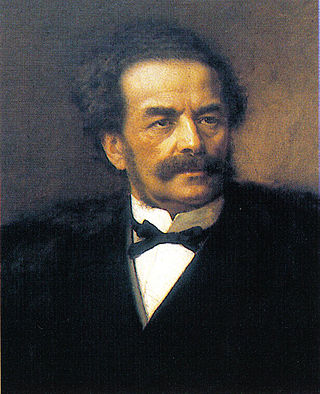
Leopold Stanisław Kronenberg was a Polish banker, investor, and financier, and a leader of the 1863 January uprising against the Russian Empire.
















